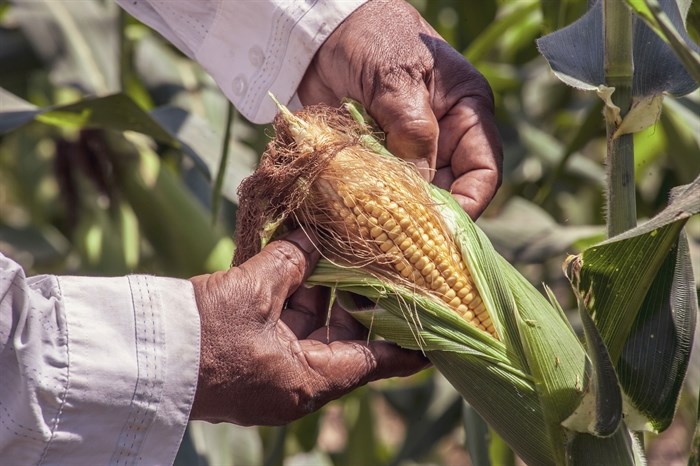Pest that caused $1 billion in damages to US corn found in North Okanagan

A pest that caused $1 billion worth of damages in the U.S. midwest corn industry has just been found in the North Okanagan.
Corn rootworms are a pest native to North America that causes severe damage both as larvae and as adults to corn crops. Western corn rootworms have been present in the Fraser Valley since 2016, but this is the first time they have been detected in the North Okanagan.
Tracy Hueppelsheuser, an entomologist with the Ministry of Agriculture and Food, told iNFOnews.ca the ministry has been using pheromone traps and visual searches to survey crops for the pests for the past seven years.
“August 2023 was the first time it was detected in the North Okanagan,” she said. “So, it's brand new news. We know that it's in the Salmon Arm area and the Enderby-Armstrong area.”
Hueppelsheuser said that further survey work will be conducted next summer to see if the pest infestation is more widespread in the Okanagan.
The pests may already be causing significant damage.
“Damage is caused by the larva, which hatches in the spring from an egg that overwintered in the soil,” Hueppelsheuser said. “So, the larva hatches when the corn is young and it feeds on the new roots of the corn, and the larva destroys the roots... Obviously, if you compromise the root, the plant can't get as much moisture and nutrition. So it affects how well the plant grows.”
Once fully grown, the beetles can cause damage to the corn cobs as well.
“The beetle can also cause damage. It's a different kind of damage,” she said. “The beetle feeds on pollen and silk and foliage so It can affect pollination because it eats the corn silk. And if the silks are damaged, then the corn cob can't fill properly. And so the beetle can also cause some trouble.”
Unfortunately, these pests are not only a problem for corn farmers. Once the beetles have hatched, they will often migrate to gardens and start feeding on late season flowers.
“The larva can only complete their cycle on corn. However, the beetles can go to any flower, and they really like to go to melon flowers or dahlias,” Hueppelsheuser said. “They will actually feed on the flower and damage the petals….That's another way to watch out for the pest, watch for the beetles on late summer and fall flowers.”
Corn rootworms have been present in the U.S. midwest for 50 years and in that time have caused significant financial damage amounting to around $1 billion. That number represents the estimated loss in damages, Hueppelsheuser said, but also the cost it takes to control the pest.
“We've been fortunate in British Columbia,” she said. “We have tools that were developed in other parts of the world that we can use. Most of them are prevention practices. So if you plan properly and do everything you should do, then you shouldn't have any damage.”
An important step in preventing corn rootworms is crop rotation, Hueppelsheuser said. As corn is the only host the bug can go on, farmers can destroy the pest by changing their corn to a different crop for a couple of years.
“The most important and best way to manage corn rootworm is to make sure you rotate out of corn regularly,” she said.
To contact a reporter for this story, email Georgina Whitehouse or call 250-864-7494 or email the editor. You can also submit photos, videos or news tips to the newsroom and be entered to win a monthly prize draw.
We welcome your comments and opinions on our stories but play nice. We won't censor or delete comments unless they contain off-topic statements or links, unnecessary vulgarity, false facts, spam or obviously fake profiles. If you have any concerns about what you see in comments, email the editor in the link above. SUBSCRIBE to our awesome newsletter here.



